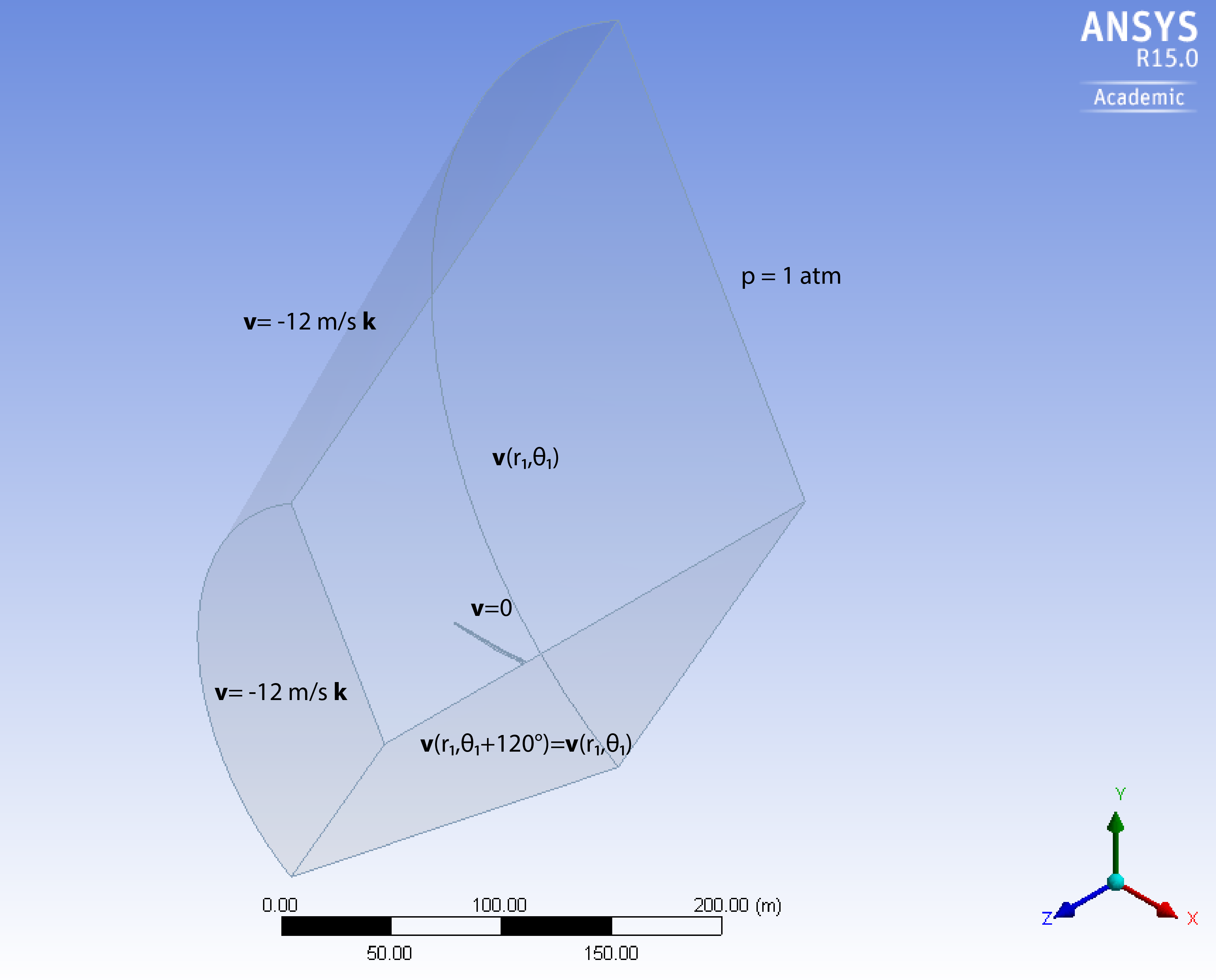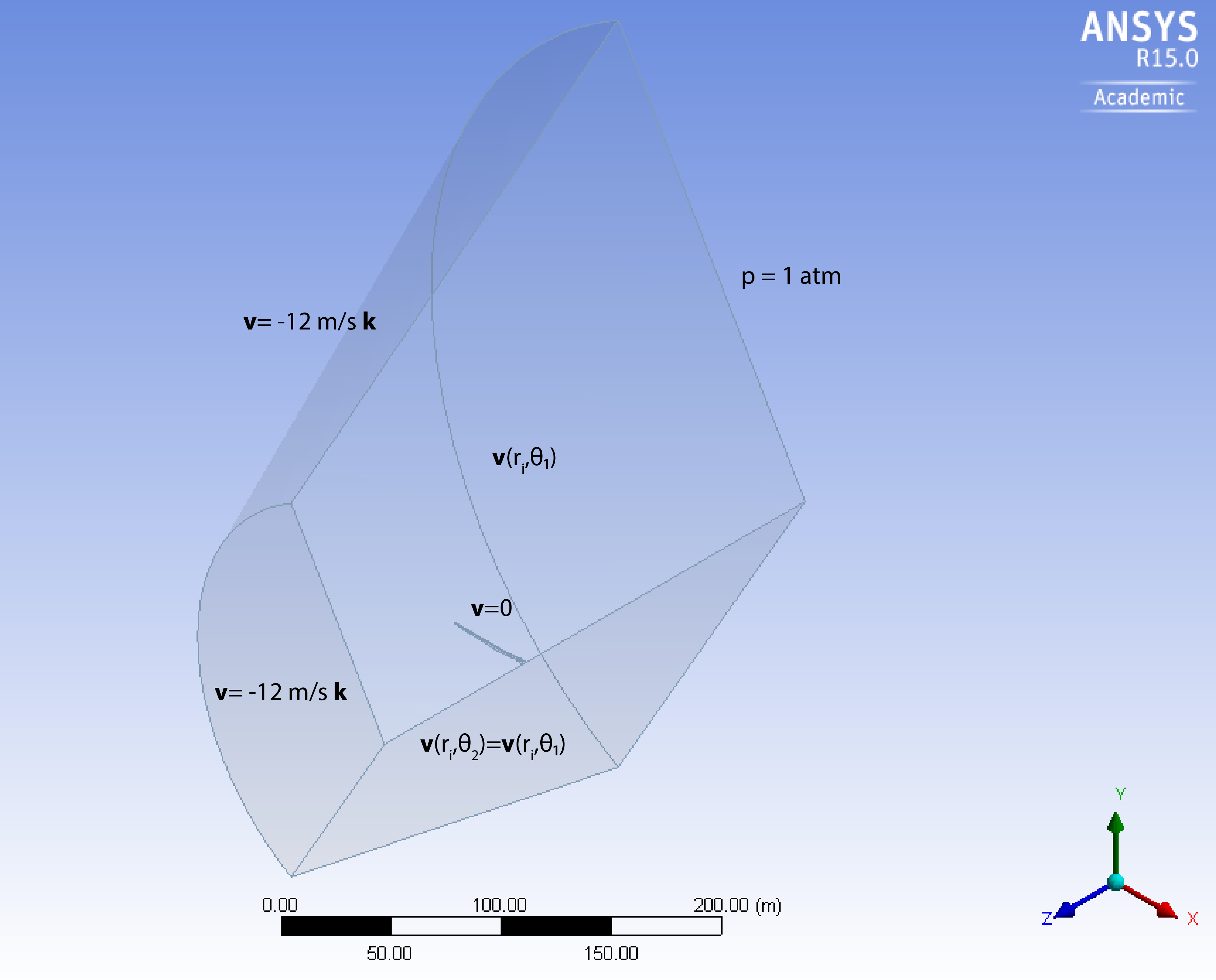...
| Wiki Markup |
|---|
{latex}
\begin{equation*}
\vec{v}^{\,}(r_1,\theta) = \vec{v}^{\,}(r_1,\theta_1 - 120n)
\end{equation*}
{latex} |
| Wiki Markup |
|---|
This therefore proves that the velocity distribution at theta of 0 and 120 degrees are the same. If we denote theta_1 to represent one of the periodic boundaries for the 1/3 domain and theta_2 being the other boundary, then
{latex}$\vec{v}^{\,}(r_i,\theta_1)=\vec{v}^{\,}(r_i,\theta_2)${latex} |
The boundary conditions on the fluid domain are as follow:
Inlet: Velocity of 12 m/s with turbulent intensity of 5% and turbulent viscosity ratio of 10
...
Side Boundaries: Periodic
...
...
Numerical Solution Procedure in ANSYS
...
This huge set of algebraic equations is inverted through an iterative process. The matrix to be inverted is huge but sparse.
Solver: Pressure-based
...
In FLUENT, we will use the pressure-based solver.
Hand-Calculations of Expected Results
...
 Sign-up for free online course on ANSYS simulations!
Sign-up for free online course on ANSYS simulations!

